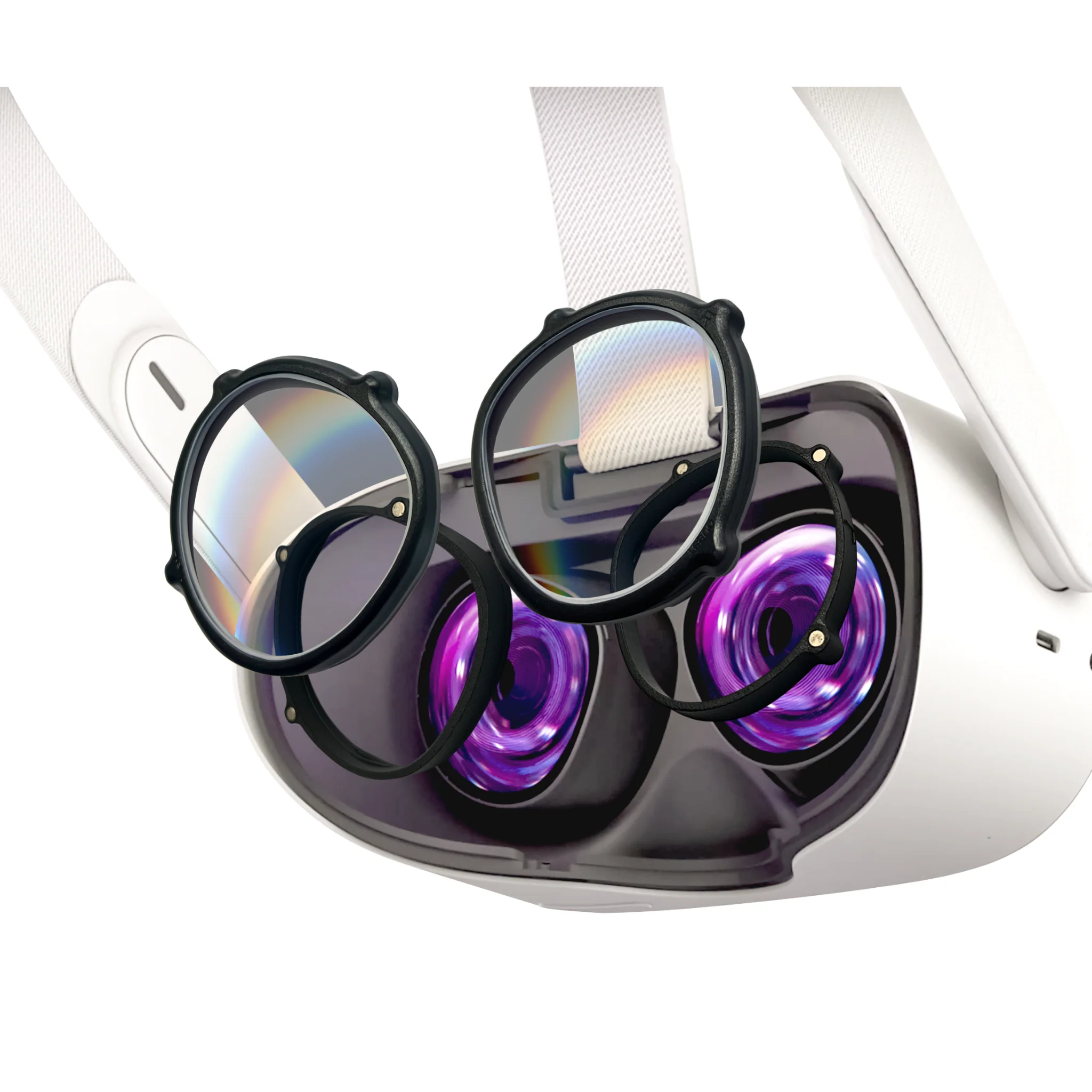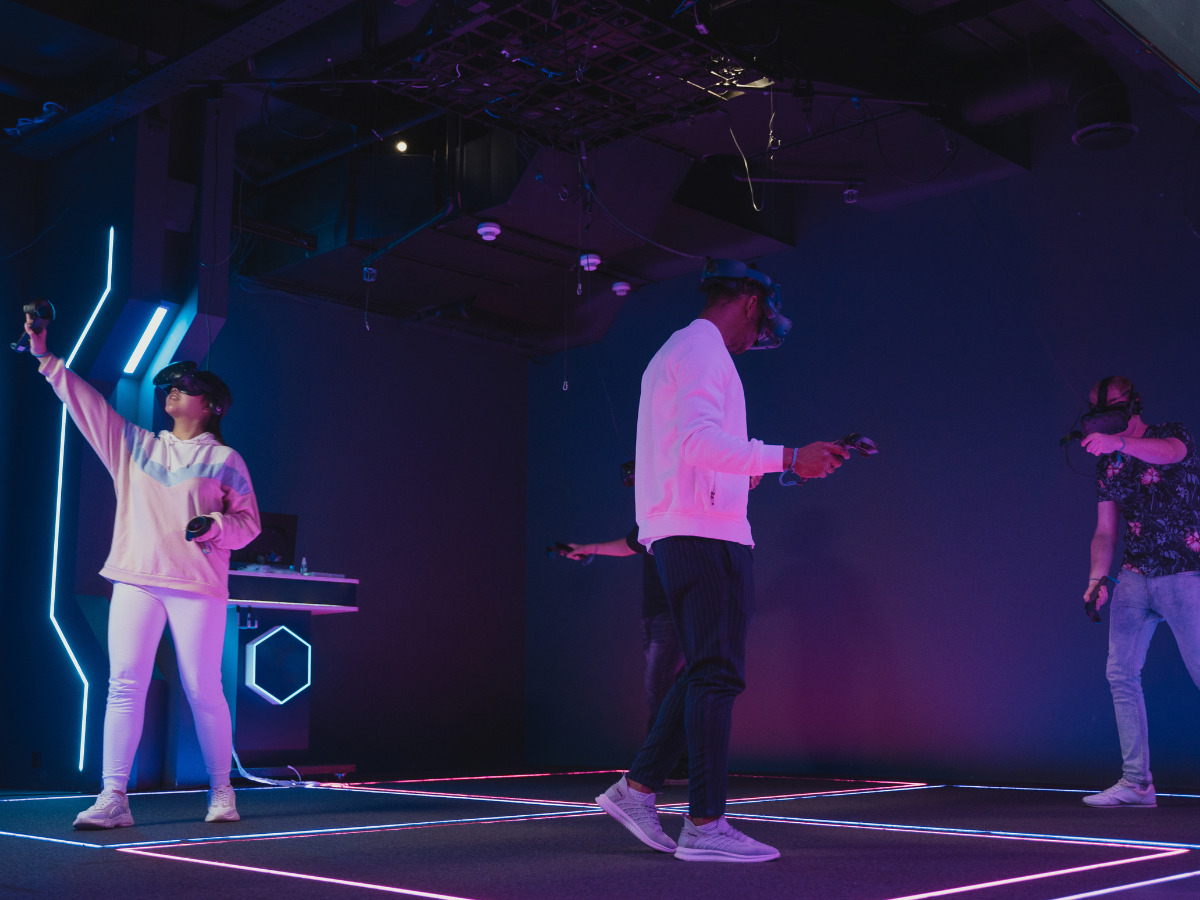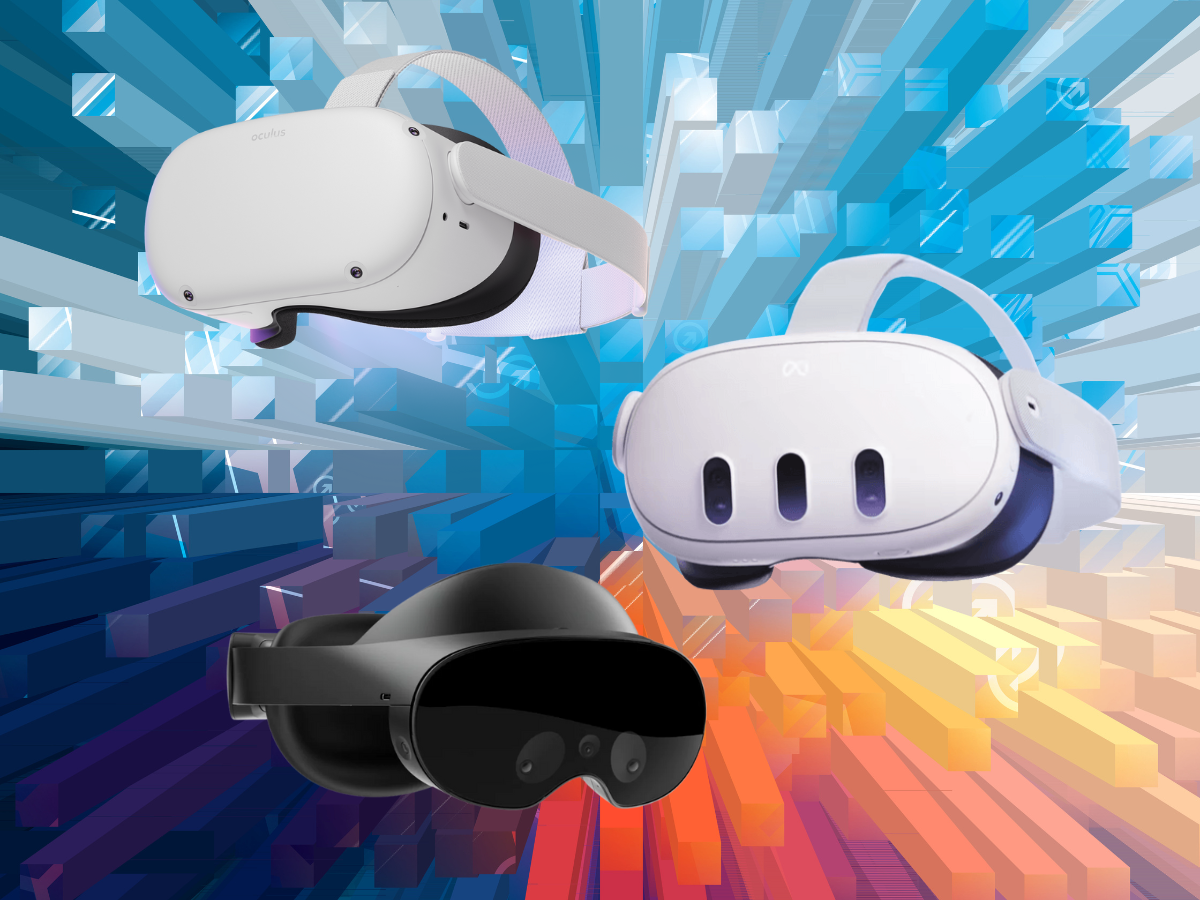If you wear glasses, you may have noticed that they can be uncomfortable while experiencing VR. Luckily, there’s a solution: prescription lenses for headsets. In this post, we’ll cover everything you need to know about getting prescription lenses for your VR headset, including the benefits, details about your prescription, and the different routes you can take to take your headset experience to the next level.
Why use prescription lenses for VR?
Using glasses in VR can cause a variety of problems. They can scratch the lenses of your headset, which can be costly to replace if the damage is great enough. They can be uncomfortable or even impossible to wear with some VR headsets, especially for extended periods of time. Prescription lenses, on the other hand, can provide a more comfortable and immersive VR experience. If you’ve been using a larger facial interface to make room for your glasses, making the switch can let you remove the extra padding. Bringing the headset closer to your face like this can increase your FOV by a noticeable amount.
How to get your prescription
The first step to getting prescription lenses for your VR headset is to get an up-to-date prescription from your optometrist. While you don’t have to mention it’s for VR, make sure to ask for your pupillary distance. Your pupillary distance, or IPD, is the distance between your pupils. Getting this right can help reduce your eye strain which is always a plus when it comes to these topics.
The Lenses
DIY Route
Don’t glue prescription lenses to your headset. I’ve seen people try this and end up with a worse experience than just wearing their glasses normally. While I’ve also seen people do it successfully, I cannot recommend this option when there’s much better ways to secure your lenses. Now that that’s out of the way, if you have access to a 3d printer through a friend, a makerspace, or a site like Shapeways, you can print a custom adapter.
Essentially these work by buying a cheap pair of glasses from somewhere like Zenni. Then you pop the lenses out of those glasses and into the adapter. These adapters then connect to your headset usually through friction and/or magnets, much the same way as the aftermarket options do.
Here’s an example. While I haven’t tried it personally, if you have the Quest 2, Quest, or Rift S for your headset, you can head on over to Thingiverse and grab this cool adapter. With your prescription in hand, you get their recommended glasses from Zenni – a $13 dollar pair of round glasses. Once the adapter is printed and the glasses arrive, pop the lenses out being careful to keep them rotated the same way and secure them into the 3d print. Then press everything into place over your headset lenses and you’re ready to go! There are more detailed instructions I would recommend reading on the Thingiverse page but it’s pretty straightforward and inexpensive.
Aftermarket
If you’re looking for a more professional and customized solution, you can order prescription lenses from a manufacturer like VR-Wave. They offer lenses specifically designed for various VR headsets and can be customized to your exact prescription. However, this route is more expensive and may require a longer wait time to receive your lenses.
These are the kind that I personally have, and I love them. While the 3d printed option is awesome for saving on cost, these have a special feature I wasn’t able to find in a 3d print – magnets. I share my headset with the rest of my family so having magnetic lenses work well for us. I can pop my prescription out and my wife can swap hers in in seconds without any wear and tear on the mounting pieces. Then we can take them off entirely for my son or others who want to give VR a try.
The big drawback, as stated before, is the price. Plugging my current prescription in currently puts the cost at $85 before shipping. A far distance from the twenty dollars the DIY solution comes out to, but it gives you something to think about.
Final Thoughts
If you’re a VR enthusiast who wears glasses, getting prescription lenses for your headset can greatly improve your experience. Whether you choose the DIY route or opt for a tailored solution like I do, there are options available to suit your needs and budget. Be sure to get an up-to-date prescription from your optometrist and consider using prescription lenses in VR.




